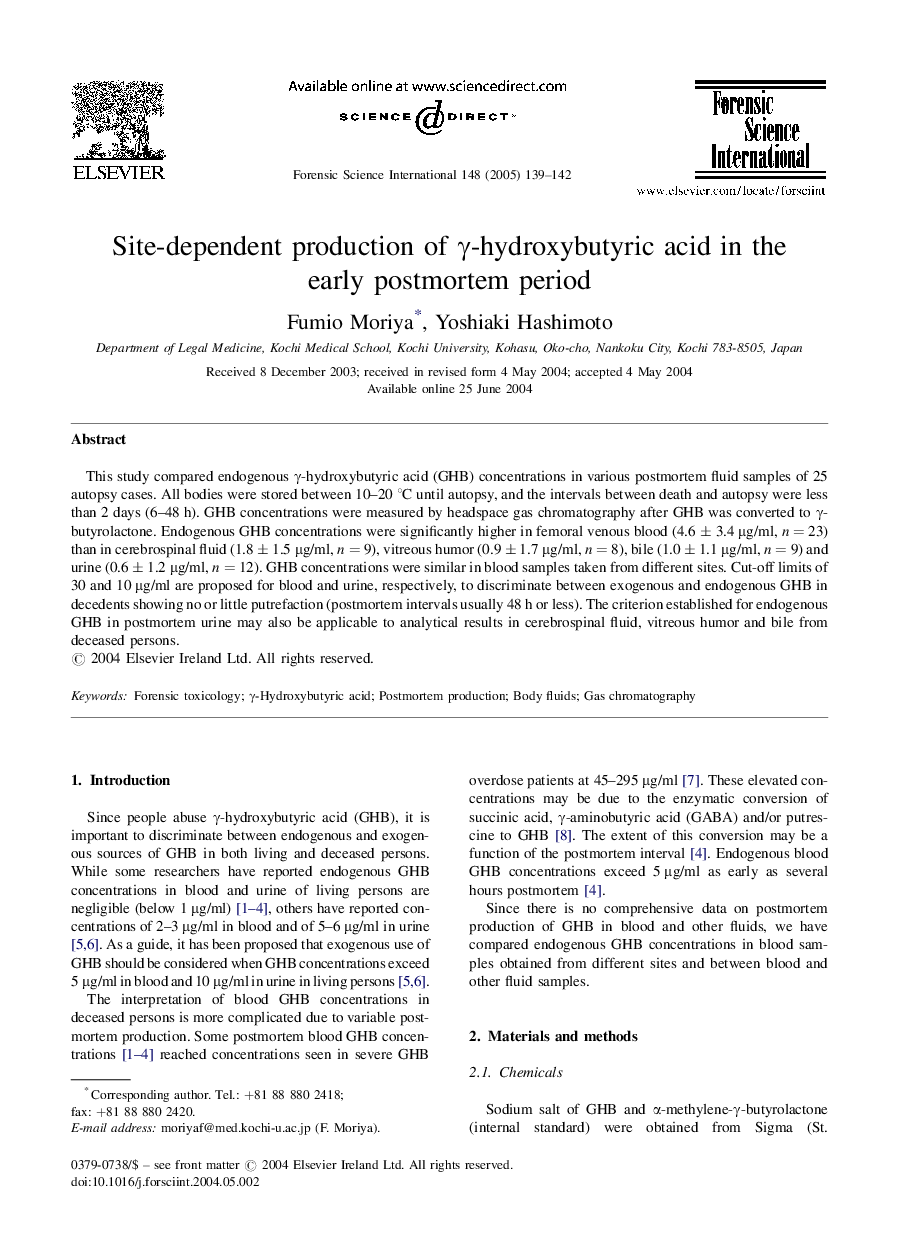| Article ID | Journal | Published Year | Pages | File Type |
|---|---|---|---|---|
| 9622612 | Forensic Science International | 2005 | 4 Pages |
Abstract
This study compared endogenous γ-hydroxybutyric acid (GHB) concentrations in various postmortem fluid samples of 25 autopsy cases. All bodies were stored between 10-20 °C until autopsy, and the intervals between death and autopsy were less than 2 days (6-48 h). GHB concentrations were measured by headspace gas chromatography after GHB was converted to γ-butyrolactone. Endogenous GHB concentrations were significantly higher in femoral venous blood (4.6 ± 3.4 μg/ml, n = 23) than in cerebrospinal fluid (1.8 ± 1.5 μg/ml, n = 9), vitreous humor (0.9 ± 1.7 μg/ml, n = 8), bile (1.0 ± 1.1 μg/ml, n = 9) and urine (0.6 ± 1.2 μg/ml, n = 12). GHB concentrations were similar in blood samples taken from different sites. Cut-off limits of 30 and 10 μg/ml are proposed for blood and urine, respectively, to discriminate between exogenous and endogenous GHB in decedents showing no or little putrefaction (postmortem intervals usually 48 h or less). The criterion established for endogenous GHB in postmortem urine may also be applicable to analytical results in cerebrospinal fluid, vitreous humor and bile from deceased persons.
Related Topics
Physical Sciences and Engineering
Chemistry
Analytical Chemistry
Authors
Fumio Moriya, Yoshiaki Hashimoto,
